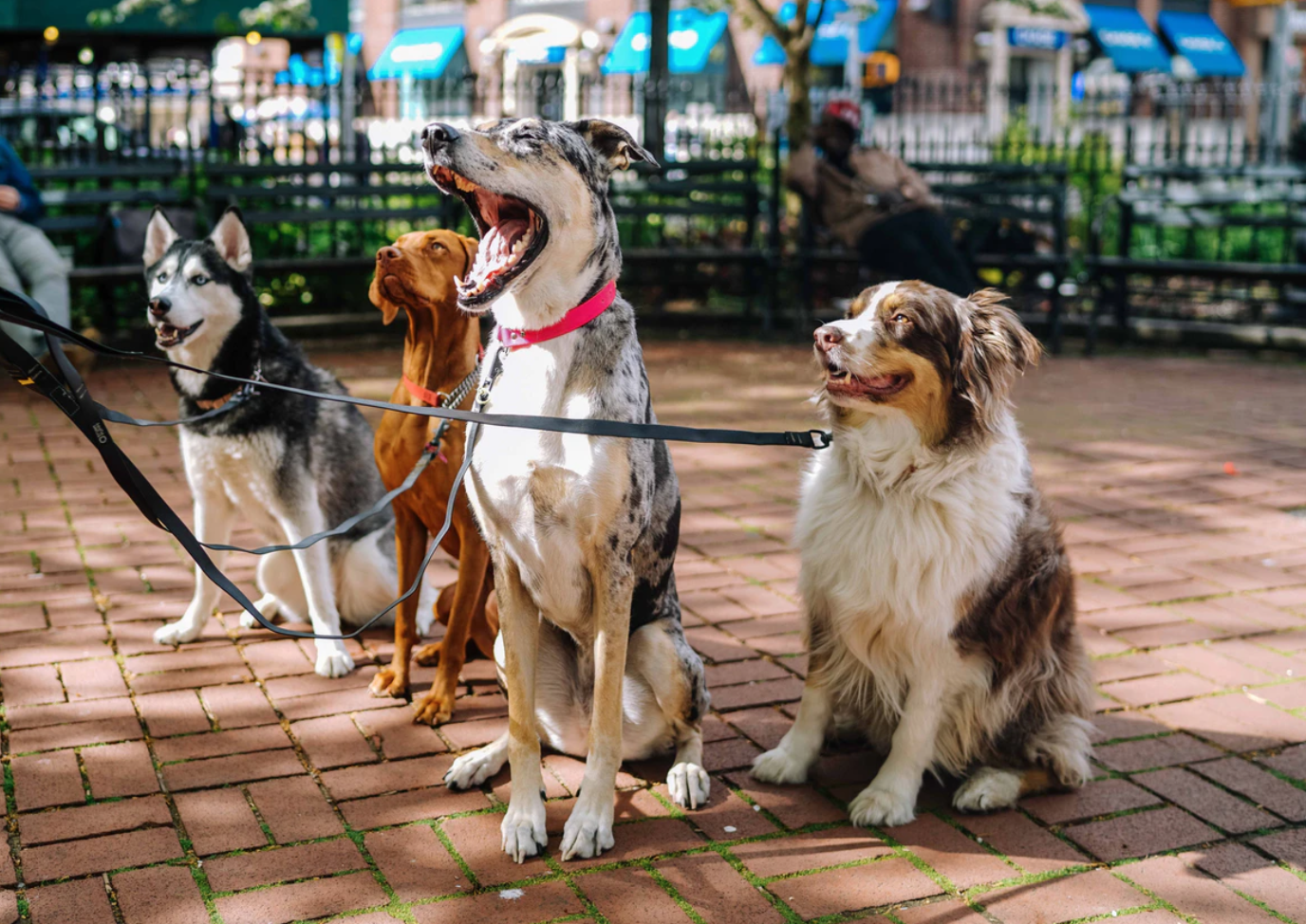
TREAT YOUR FURRY FRIENDS TO THE BEST LIFE POSSIBLE
Our Services
-
Cue foundations: teach clear cues (sit, down, come/recall, stay, heel/loose-leash, leave it, place). Begin with simple, short repetitions and build duration, distance, and distractions.
Focus & engagement: build attention skills (name recognition, “watch me”) so the dog chooses you in distracting environments.
Impulse control: structured games and exercises (wait, settle, delayed reward) to develop self-control and reduce grabbing, lunging, or rushing doors.
Leash skills & manners: loose-leash walking, polite greetings, door etiquette, and greeting people without jumping.
Proofing & generalization: practice every cue in multiple locations, with different people, and increasing distractions so behavior transfers to real life.
Management & environmental setup: use crates, long lines, gates, and routines to prevent practice of unwanted behavior while training progresses.
Reinforcement strategy: start with high-value, frequent rewards; systematically fade to variable reinforcement and natural rewards (toys, life rewards).
Owner education: teach owners marker timing, timing of rewards, how to read dog body language, consistent cue language for all household members, and how to troubleshoot common setbacks.
-
Comprehensive Assessment & Initial Consult: detailed history, medical review, and direct observation to form a functional diagnosis (why the behavior is happening).
Functional Modification Plan: step-by-step, evidence-based strategy that includes management, behavior-change exercises, and measurable goals.
Management First: minimize risk and prevent practice of the problem (muzzles, gates, avoidance, environmental changes) while treatment proceeds.
Behavior-Change Techniques: counterconditioning (change emotional response), desensitization (gradual exposure below threshold), systematic desensitization + reward-based shaping, and contingency management (altering consequences).
Medical Consideration: coordinate with a veterinarian when pain, neurology, endocrine issues, or psychopharmacology may be involved; medication is sometimes part of an optimal plan.
Owner Training & Homework: owners will learn how to implement exercises safely and consistently; progress depends heavily on owner diligence and environment changes.
Monitoring & Adjustment: frequent follow-ups, video review, and plan tweaks as thresholds shift and your dog improves.
-
Socialization (critical window ~3–14 weeks): safe, positive exposure to many people, ages, animals, surfaces, sounds, and gentle handling. Short, positive exposures below the puppy’s fear threshold build confidence. (Always check vaccination/vet guidance for high-risk settings.)
House training / elimination: consistent schedule, frequent trips outside, reward immediate elimination outdoors, manage accidents calmly, and prevent access to “toilet” spots. Most puppies show reliable house training in weeks to months with consistent routines.
Crate & alone-time training: crate as a safe den and tool for potty training and prevention. Build tolerance gradually with short alone periods and rewards; never use crate for long-term punishment.
Bite inhibition & mouthing control: teach “soft mouth” with redirection, yelps/withdrawal and replacement with toys; reward gentle play. Important for safety around kids.
Basic obedience cues: sit, down, recall (come), name recognition, “leave it,” polite greeting, “settle” or place. Taught with short, frequent sessions and very high-value rewards.
Leash skills: loose-leash walking using front-clip harness or flat collar, short practice walks, stop-and-reward for attention.
Impulse control & enrichment: “wait” and “stay” games, feeding enrichment (puzzles), short nose-work sessions to tire brain, and structured play.
Management to prevent learning bad habits: gates, supervision, puppy-proofing, timed outings — don’t allow unwanted behaviors to be practiced.
-
Exercise, exercise, exercise… the 1st pillar of a healthy, happy, and emotionally-balanced dog! Most dogs need a minimum of two walks per day at 30 minutes each and twice as much for larger and/or higher-energy dogs. There is no substitute for daily walks, the walk is an essential requirement for all dogs - but we also enjoy scheduling time at the dog park or playing fetch with your furry friends as a fun way to treat them after walking.
We offer custom dog-walking and exercise services to a variety of owner’s busy lives and schedules.
-
There will always come a time when we have to leave home for work, for fun, or for a thousand other reasons - and cannot take our beloved pets with us. This is a source of great anxiety for many pet-owners - leaving us feeling either trapped and unable to leave home for extended periods of time, or suffering from guilt for leaving animals they love in boarding when they must.
Customized extended care plan options are an excellent choice for pets requiring extra care and attention, or for owners who just want to spoil their pets with extra love in their absence.
-
Being a pet-owner is a big commitment, and providing them with care and attention around the clock can be hard for students & educators, busy professionals, frequent travelers, and many others who cannot be home all day or every day. For pets who are calm and balanced, sometimes a visit from a friendly human is all it takes to keep them in a good place, let them out for a potty-break, top off their food and water, and hang out for a bit of belly-rubbin’.
Drop-ins can be arranged separate from or in addition to, walks and exercise.
-
Got cats, bunnies, turtles, fish, etc? Not a problem - we’re happy to take care of your other pets.
Litter box cleaning/waste removal, feeding, water refresh, and plenty of attention and love while you’re away.
